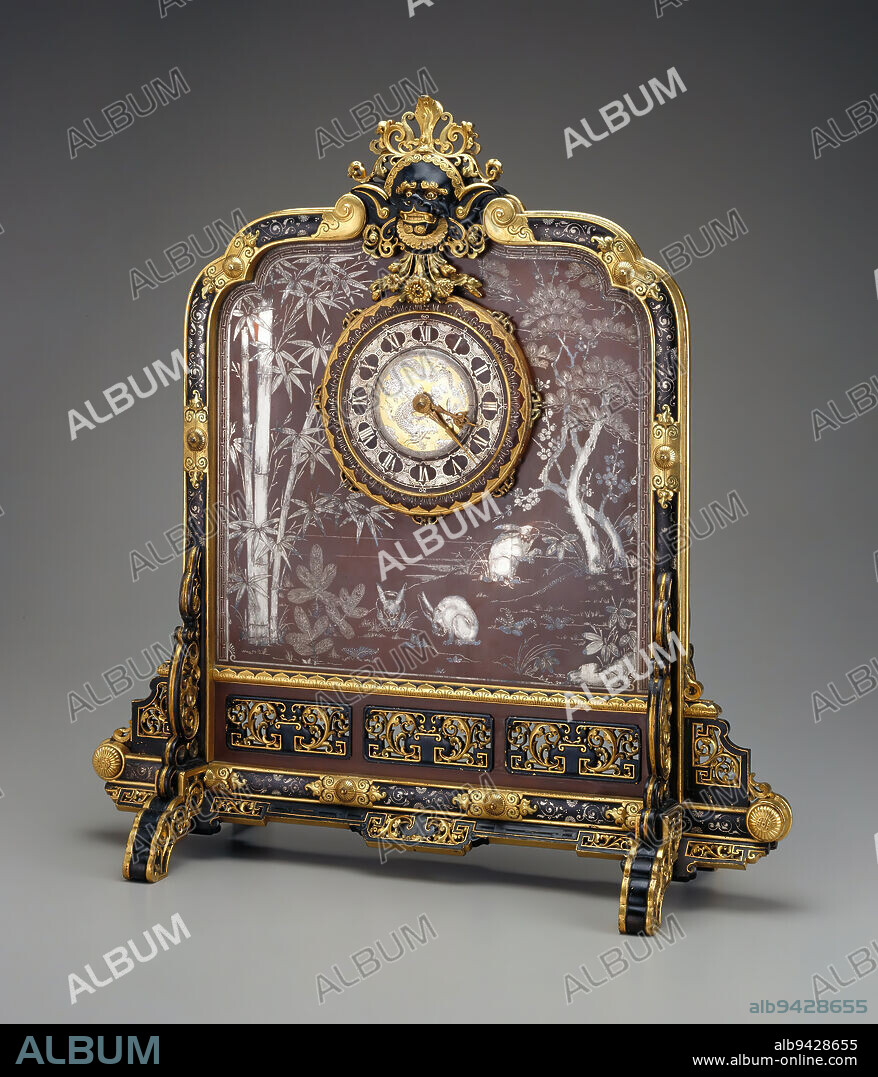alb9428655
Clock, c. 1869, Emile-Auguste Reiber; Maker: Christofle, French, 1826-1893, 20 1/2 x 19 1/2 x 7 3/4 in. (52.07 x 49.53 x 19.69 cm)6 1/2 x 2 3/8 x 7/8 in. (16.51 x 6.03 x 2.22 cm) (pendulum), Silver, bronze, copper, gilt, pigment, France, 19th century, This magnificent clock illustrates some of the earliest Japanese influences on European decorative arts following the reopening of Japan to the Western world in 1854. The clock combines European and Asian iinfluences. Its overall form is derived from an 18th-century Chinese table screen; the face and whimsical beast above it is inspired by Tibetan mandalas; and the silver inlay depicts scenes taken from Japanese paintings, lacquerware, and ceramics.

|
Ajouter à une autre Lightbox |
|
Ajouter à une autre Lightbox |



Avez-vous déjà un compte? S'identifier
Vous n'avez pas de compte ? S'inscrire
Acheter cette image.
Sélectionnez l'usage:

Légende:
Voir la traduction automatique
Clock, c. 1869, Emile-Auguste Reiber; Maker: Christofle, French, 1826-1893, 20 1/2 x 19 1/2 x 7 3/4 in. (52.07 x 49.53 x 19.69 cm)6 1/2 x 2 3/8 x 7/8 in. (16.51 x 6.03 x 2.22 cm) (pendulum), Silver, bronze, copper, gilt, pigment, France, 19th century, This magnificent clock illustrates some of the earliest Japanese influences on European decorative arts following the reopening of Japan to the Western world in 1854. The clock combines European and Asian iinfluences. Its overall form is derived from an 18th-century Chinese table screen; the face and whimsical beast above it is inspired by Tibetan mandalas; and the silver inlay depicts scenes taken from Japanese paintings, lacquerware, and ceramics.
Crédit:
Album / quintlox
Autorisations:
Modèle: Non - Propriété: Non
Questions sur les droits?
Questions sur les droits?
Taille de l'image:
2693 x 3141 px | 24.2 MB
Taille d'impression:
22.8 x 26.6 cm | 9.0 x 10.5 in (300 dpi)
Mots clés:
ARGENT (MÉTAL) • ARGENT • BRONZE • BRONZES • CORPS VISAGE • CUIVRE TRAVAIL DU • CUIVRE • FACE • FRANÁAIS • FRANÁAISE • FRANCE • FRANÇAIS • MATERIAU BRONZE • PIGMENT • TRAVAIL DU CUIVRE • VISAGE • VISAGES • XIXE SIÈCLE
 Pinterest
Pinterest Twitter
Twitter Facebook
Facebook Copier le lien
Copier le lien Email
Email
